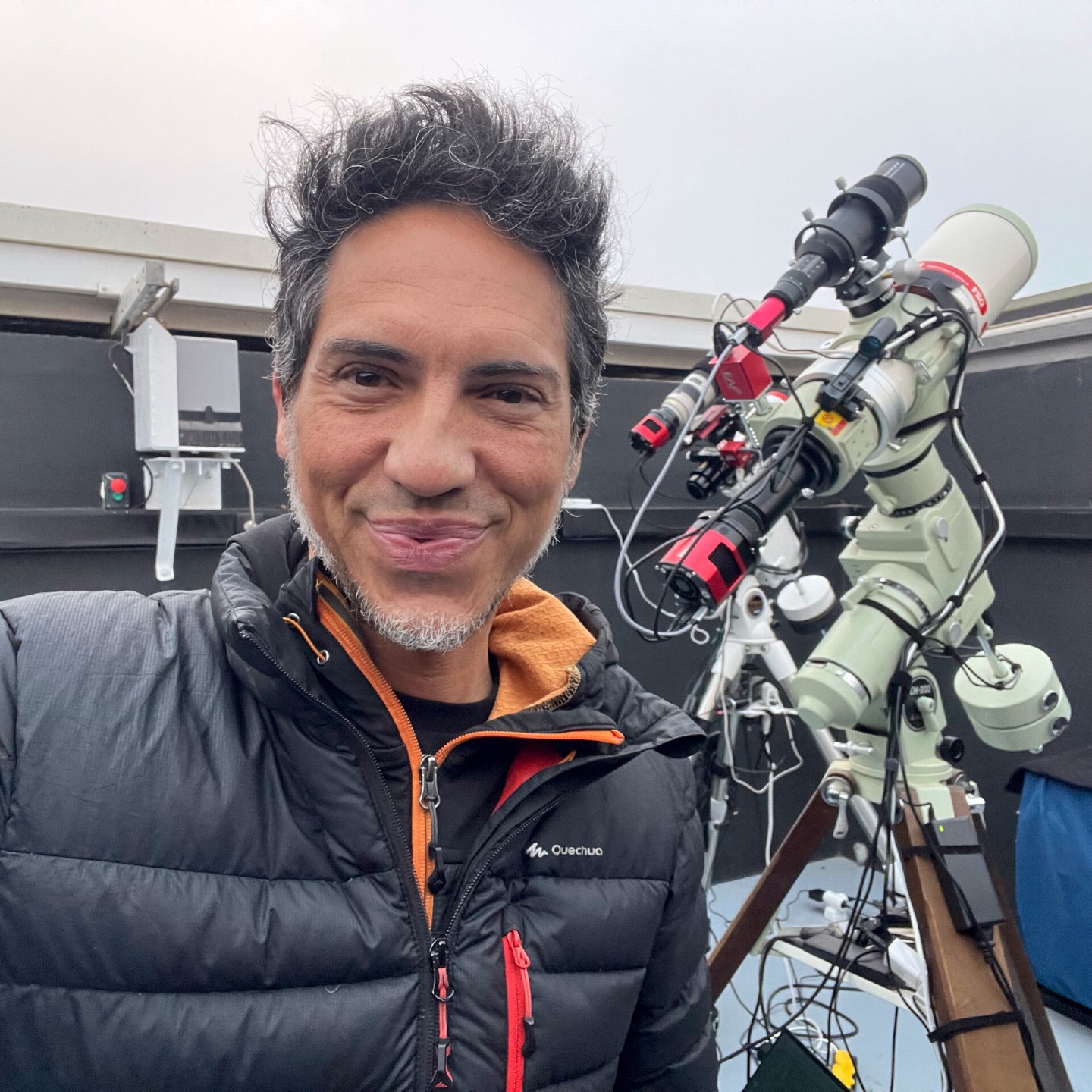Astrophotographer captures comet Tsuchinshan-ATLAS growing an anti-tail (photos)
Astrophotographer Miguel Claro captured Comet C/2023 A3 (Tsuchinshan-ATLAS) from the Dark Sky Alqueva reserve in Portugal on Oct. 13, 2024 as the comet was displaying an 'anti-tail.'
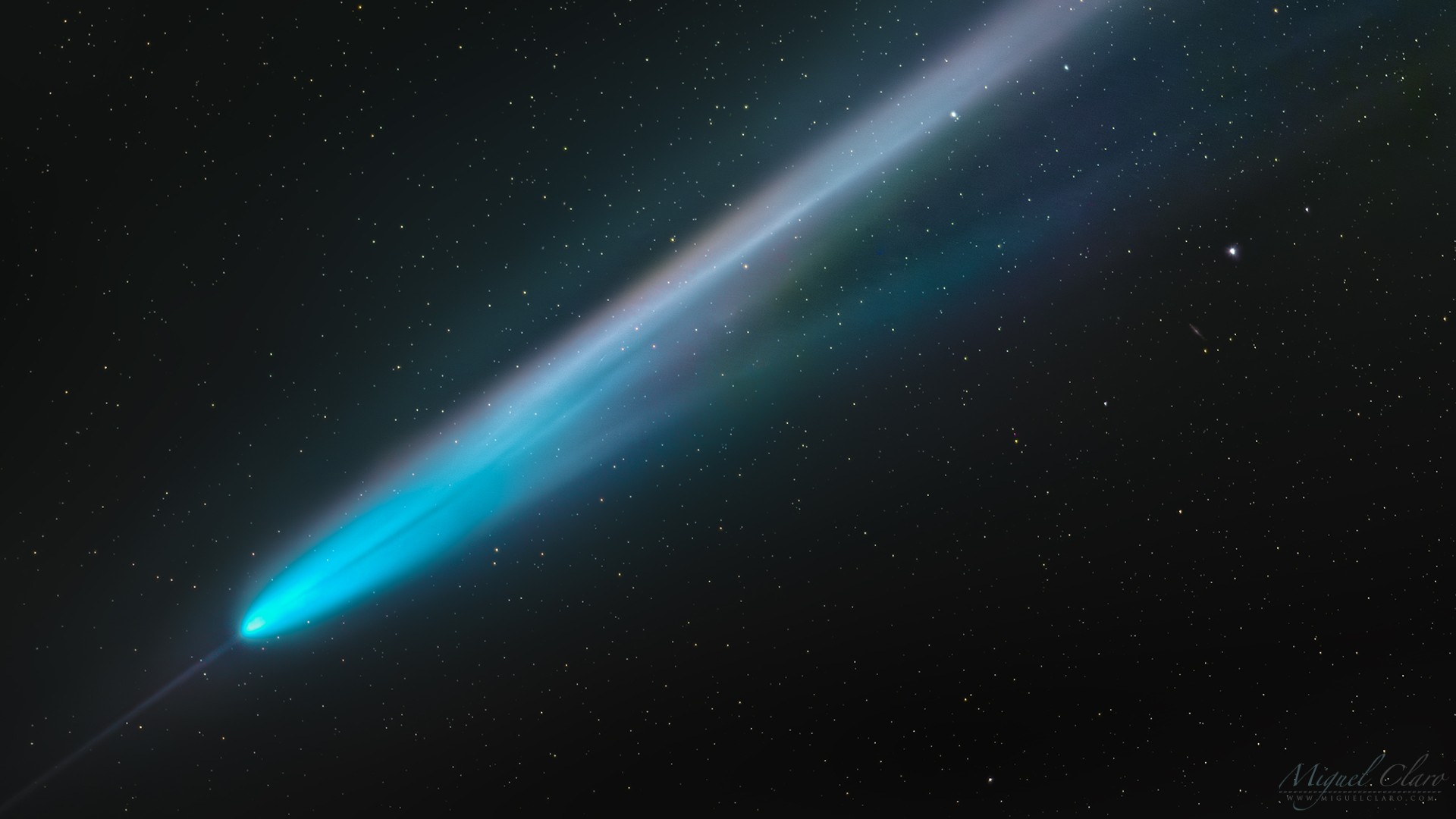
Miguel Claro is a professional photographer, author and science communicator based in Lisbon, Portugal, who creates spectacular images of the night sky. As a European Southern Observatory Photo Ambassador and member of The World At Night and the official astrophotographer of the Dark Sky Alqueva Reserve, he specializes in astronomical "Skyscapes" that connect both Earth and the night sky.
This close-up image of comet C/2023 A3 (Tsuchinshan-ATLAS) was taken from the Dark Sky Alqueva reserve in Portugal on Oct. 13, 2024 when the comet was displaying an impressive level of brightness and details, as well as a cool 'anti-tail.'
In this photo, it also seems that the comet's ion tail is also visible alongside its prominent dust tail. In addition to trailing long tails of dust and gases behind them, some comets develop an ion tail, a second tail made up of charged particles pushed away from comets by solar radiation and solar wind.
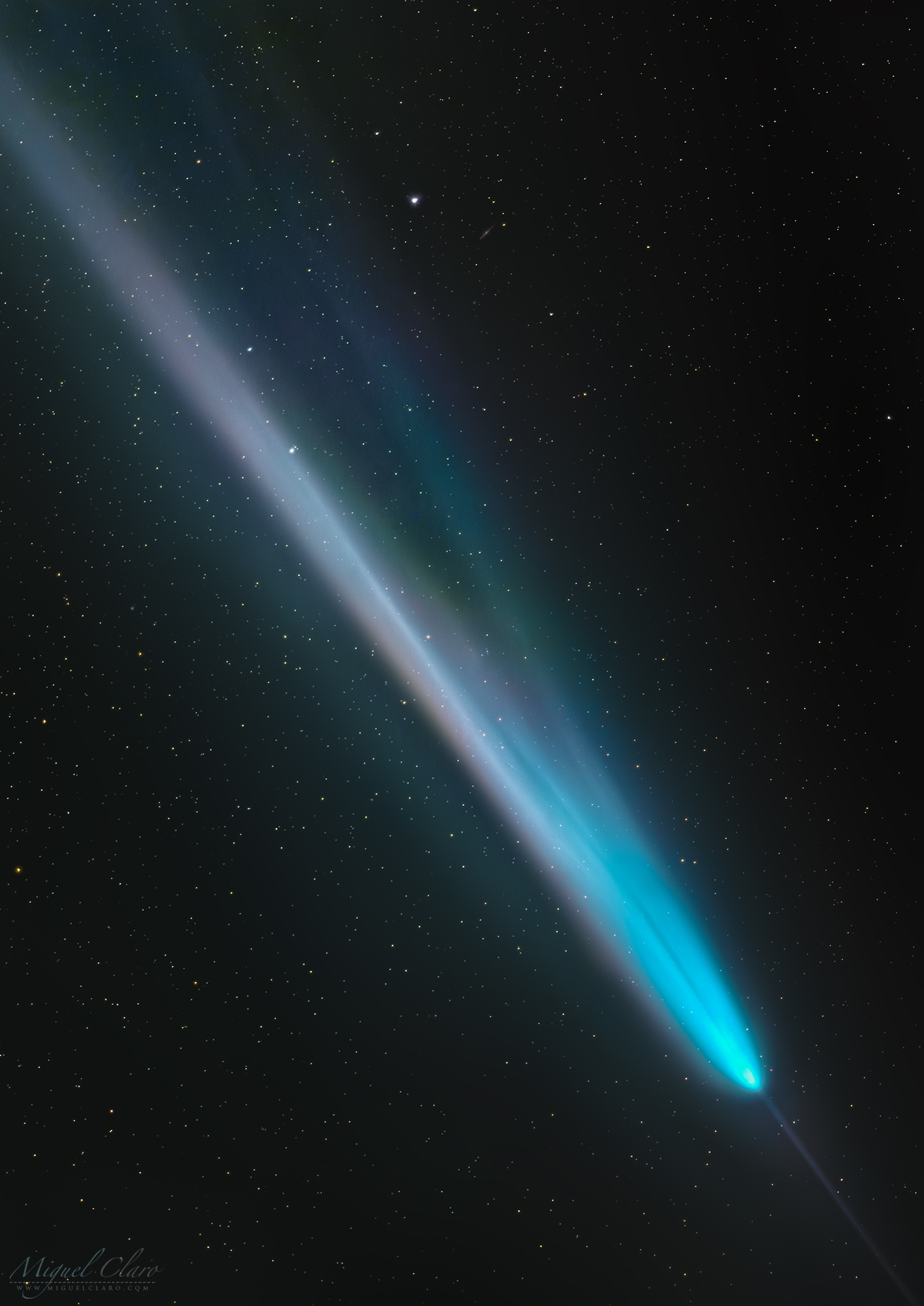
I processed this one with my deep sky techniques to recover as much of the original color and details hidden in the dust tail as possible, which are usually washed out, due to the bluish background light from the moon and the sun.
This image consists of 75 short exposures of 10 seconds each at ISO1600, shot with a 300mm prime lens at f2.8, comprising around 12 minutes of images.
I photographed comet Tsuchinshan-ATLAS as the Earth was passing through the comet's orbital plane (the flat disk-like shape along which a body orbits the sun). When comets are viewed along their orbital planes as seen from Earth, it can sometimes appear as if they sprout an 'anti-tail,' a tail that faces towards the sun rather than away from it, as their other tails do. It's clearly visible as a front-facing 'spike' coming out of the comet's nucleus in the photographs.
The other image of the comet below was taken from a beautiful field at the Dark Sky Alqueva reserve in Portugal. The moonlight was shining bright that night, so it helped to illuminate the landscape quite well.
Get the Space.com Newsletter
Breaking space news, the latest updates on rocket launches, skywatching events and more!
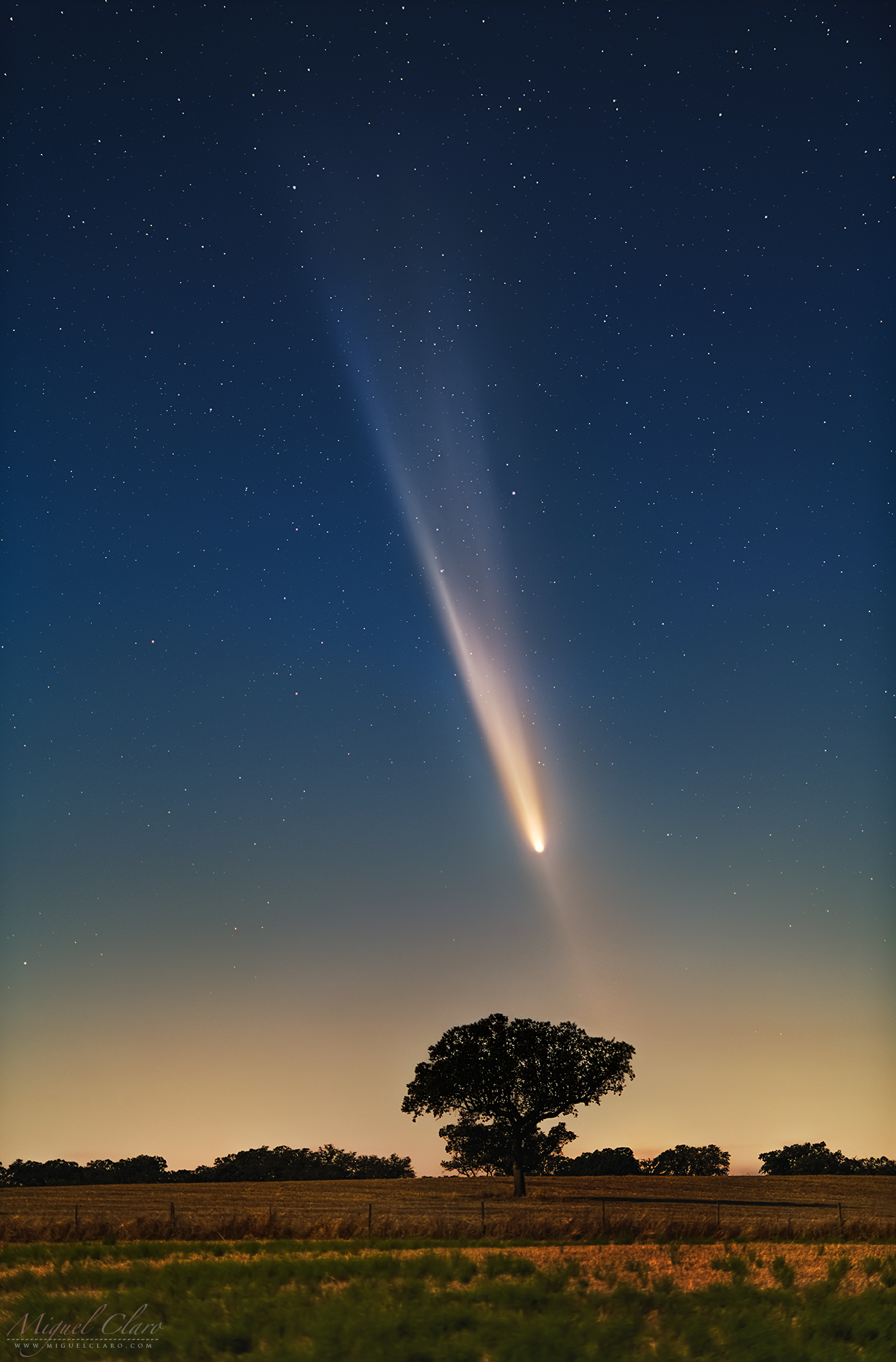
Fine art prints
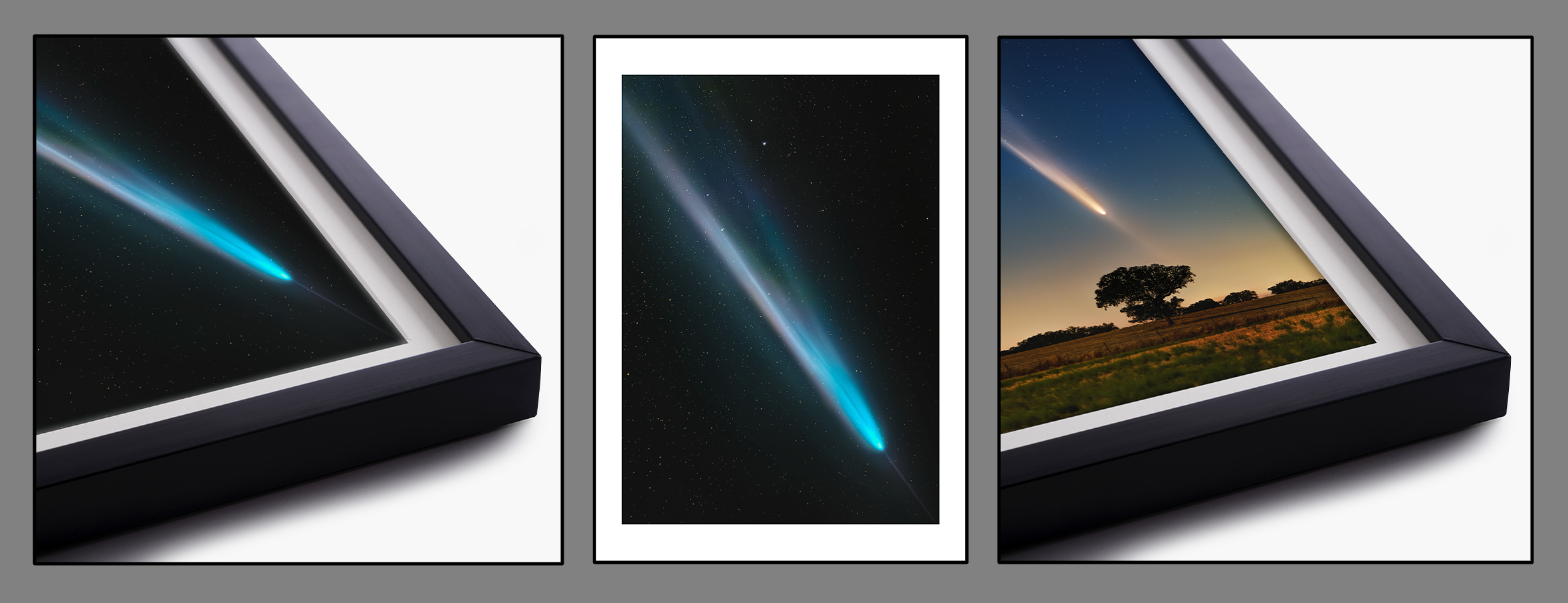
I hope you enjoy these photos as much as I do, and if you want to support my work as an independent artist, you can buy one of my images as a print, piece of art or wall decor for your sweet home!
Explore the size options and different types available on my print gallery. Meanwhile, you can sign-up my newsletter to get early access of future releases.
Join our Space Forums to keep talking space on the latest missions, night sky and more! And if you have a news tip, correction or comment, let us know at: community@space.com.
Miguel Claro is a professional photographer, author and science communicator based in Lisbon, Portugal, who creates spectacular images of the night sky. As a European Southern Observatory photo ambassador, a member of The World At Night and the official astrophotographer of the Dark Sky Alqueva Reserve, he specializes in astronomical skyscapes that connect Earth and the night sky.
